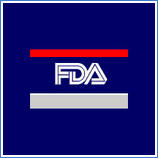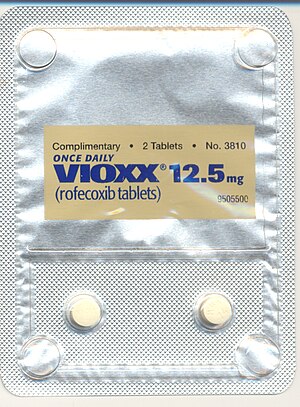 Image via Wikipedia
Image via WikipediaA USDCT judge has ordered a Texas
drug manufacturer called Deltex to shut down its operation after a federal agency found "a history of significant violations" of federal law by the company.
From
chron.com: http://www.chron.com/disp/story.mpl/metropolitan/7388244.html
After an inspection in 2008, the director of the
FDA's Dallas District claimed that the company's violations involving the methods used in, or the facilities or controls used for, their manufacture, processing, packing or holding material.
The FDA found problems with quality control procedures as welt as laboratory testing process. In its letter to the company the FDA wrote:
This inspection also revealed your firm is marketing unapproved drugs in violation of Section 505(a) of the Act [21 U.S.C. 355(a)] and the drugs are also misbranded in violation of Section 502(f)(1) [21 U.S.C. 352(f)(1)] and Section 502(c) [21 U.S.C. 352(c)].
The violations observed during our inspection and listed on the FDA-483 include, but are not limited to, the following:
1. Failure to follow written procedures applicable to the quality control unit and to establish adequate procedures in writing as required by
21 CFR § 211.22(d). Specifically, your
SOP #
QC-016-0 requires that the Quality Control Manager or designee calibrate the
[(b)(4)] FT-IR spectrometer with an internal reference standard on a
[(b)(4)] basis. This was not done for six months following the last calibration on November 9, 2007. In addition, your SOP # QC-012-1, requiring the Quality Control Manager to ensure that in-house calibration of all scales and balances is performed
[(b)(4)] with
[(b)(4)] standard weights, was not followed. Calibrations of the
[(b)(4)] Scale used to weigh active ingredients were performed with only
[(b)(4)] weights for a period of 11 months (February 2007 to January 2008). Also, your SOP QC-01 0-1 "Procedure for out of spec Inspection" is inadequate in that it lacks a defined protocol for the number of retests allowed, and has no requirement for expansion of an OOS investigation to manufacturing processes and procedures or any provision for expansion on an investigation to other lots potentially impacted. We acknowledge your correspondence of September 2, 2008, in response to the FDA-483 in which you outline corrective action on the calibrations of the spectrometer and balance. The response is incomplete because it does not include the promised revised SOP addressing the deficiencies in your written procedures for handling OOS test results. Additionally, the response fails to provide any documentation of the corrective actions related to the balance and spectrometer.
2. Failure to establish laboratory controls, including determination of conformance to appropriate written specifications for the acceptance of each lot within each shipment of components used in the manufacture, processing, packing, or holding of drug products as required by 21 CFR § 211.160(b)(1). Specifically, during review of laboratory documentation obtained as part of your supplier's qualification program for
Phenylephrine Tannate lot no. R0510; Pyrilamine Tannate lot no. R0233; and Dextromethorphan Tannate lot no. R0250, a recurrent failure to identify each peak (or absorption band) of spectra obtained using USP <197K> FT-IR identity test for functional groups characteristic of Dextromethorphan Base, Pyrilamine Base and Phenylephrine Base, was noted.
Review of the USP <197K> FT-IR Identity test spectra obtained for the stated
APIs revealed that all of the spectra generated for each API had comparable peaks in all areas of the
[(b)(4)] spectrum when processing the sample tested as described in USP <197K>. The established USP <197K> Identity test method lacks the capability to detect physico-chemical changes of incoming API raw materials or distinguish one of the above referenced APIs from another. Therefore, your firm's Identity test method is considered an inadequate analysis for the identification and quantitation of in-coming tannate containing APIs (i.e., Dextromethorphan Tannate, Pyrilamine Tannate, and Phenylephrine Tannate). In addition, your firm fails to document that your identity testing procedures can detect extraneous materials in lots of incoming API's salt/base forms, that may necessitate rejection of the lot. We acknowledge the corrective actions outlined in your September 2, 2008, response. However this response lacks scientific evidence designed to demonstrate that the proposed HPLC identity test is an improvement over the USP <197> FT-IR identity testing and that it is suitable for the specific identification of tannate containing APIs. Please be aware that identity testing in the context of multiple drug components that are compounds of closely related molecular structure must be able to discriminate between the compounds. There is no assurance that the proposed use of HPLC RRT as the preferred identity test method can adequately confirm the identity of incoming lots of tannate APIs.
3. Failure to establish adequate laboratory controls, including the establishment of scientifically sound and appropriate specifications designed to assure conformance with appropriate standards of identity, strength, quality, and purity as required by 21 CFR § 211.160(b). Specifically, your firm has not established specifications for: the amount of free Tannic Acid in drug products containing tannate compounds; the assay for
[(b)(4)] in bulk
[(b)(4)] USP (ANDA
[(b)(4)] and
Benzalkonium Chloride 50% in
[(b)(4)] drug product. In addition, your firm has failed to establish specifications or testing procedures for dissolution or rate of drug release for drug products containing tannates. We acknowledge your September 2, 2008 response in which you state that manufacturing of all drug products containing "tannate" compounds will cease as of September 2, 2008. However, we disagree with your assertion that there are no methods by which to determine the dissolution or drug release in "tannate" preparations. Methods for dissolution and drug release testing for other oral suspension products with approved
New Drug Applications (NDAs), or Abbreviated New Drug Applications (ANDAs), that have an insoluble active pharmaceutical ingredient have been developed.
4. Failure to conduct appropriate laboratory testing, as necessary, of each batch of product required to be free of objectionable microorganisms, as is required by 21 CFR § 211.165(b). For example, your firm does not conduct any preparatory testing on drug products to assess their possible inhibitory effects on microbial growth prior to testing for the presence of microorganisms. In addition, there is no growth promotion testing on the batches of media used. We acknowledge the pledge in your September 2, 2008, response to conduct preparatory testing on most product formulations by October 31, 2008. However this response is unsatisfactory because it includes no commitment to conduct growth promotion testing on each batch of growth media used. Because of the possible impact of exposure to adverse conditions while in shipment, reliance on a suppliers' Certificate of Analysis (COA) alone is not sufficient to provide a necessary degree of assurance that the purchased media will perform adequately. The performance of each lot of growth media used should, at a minimum, be confirmed upon receipt or before the first use.
5. Failure to establish and follow appropriate written procedures designed to prevent objectionable microorganisms in drug products not required to be sterile, as required by 21 CFR § 211.113(a). For example, your firm failed to perform antimicrobial effectiveness testing on all your finished product formulations. Your response of September 2, 2008, is unsatisfactory. The determination of
[(b)(4)] alone is insufficient to show the antimicrobial/preservative characteristics of a particular drug product formulation. The effectiveness of a particular solvent system, by itself or in combination with other chemical preservatives, in controlling microbial growth should be verified by actual testing.
The FDA personnel also warned the company that is had manufactured drugs that were not made in an approved method - products that include Tannate Pediatric Suspension, DuohistTM DH Liquid, Ed-A-Hist DM and Bromphenex DM.
The action by the Court? A permanent injunction, handed down by the U.S. District Court for the Southern District of Texas to Deltex’s president, Kabir Ahmed, and vice president, Mohidur R. Khan.
 Image via WikipediaFrom Reuters:
Image via WikipediaFrom Reuters:
























